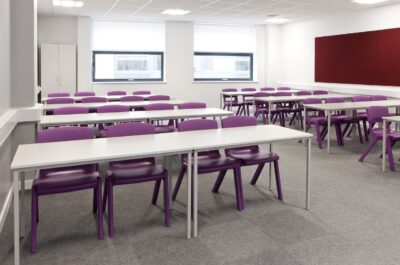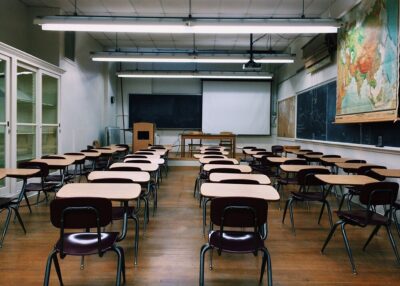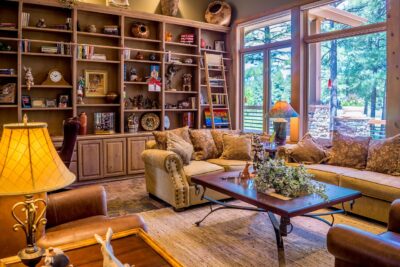
How to Retrofit Old LED Fixtures with Modern Covers
How to Retrofit Old LED Fixtures with Modern Covers By Aman | Updated on April 15th 2025 LED lighting has pretty much taken over the
Home » Why Lighting Matters in Schools and Educational Facilities
Lighting is a cornerstone of creating a productive and safe environment in schools and educational facilities. While often taken for granted, the quality and type of lighting directly affect student performance, teacher effectiveness, and the overall atmosphere of learning spaces.
Inadequate or poorly designed lighting can lead to eye strain, fatigue, and diminished focus, while effective lighting fosters concentration, creativity, and well-being. As educational institutions aim to support diverse learning styles and activities, lighting emerges as a critical factor that cannot be overlooked.

Good lighting is essential for student success. It improves visibility, allowing students to read, write, and engage in activities without undue strain. Bright, consistent lighting reduces distractions and encourages focus, which is vital for comprehension and retention. For example, well-lit classrooms create an environment where students can fully immerse themselves in lessons, while dim or uneven lighting can lead to frustration and disengagement. Teachers also benefit, as proper lighting helps them monitor the class and present materials effectively.
Lighting impacts more than just academic performance; it plays a significant role in the physical and mental health of students and staff. Poor lighting can cause headaches, eye strain, and even posture problems as students adjust to compensate for inadequate illumination. On the other hand, well-designed lighting:
Natural Lighting: Sunlight offers numerous benefits, such as reducing energy costs and improving mental health. Classrooms with large windows, skylights, or open spaces that allow sunlight to flow in are proven to enhance focus and reduce stress.
Artificial Lighting: While natural light is ideal, it is not always sufficient, particularly in older buildings or during shorter daylight hours. Artificial lighting fills the gap, ensuring consistent illumination. Schools often use a combination of natural and artificial light to create an optimal environment for learning.
Modern advancements in lighting technology have made it easier for schools to provide efficient, effective illumination:
Different areas within a school require tailored lighting solutions to support specific activities:
Energy-efficient lighting is a priority for schools seeking to lower operational costs while minimizing their environmental impact. Strategies include:
Upgrading a school’s lighting system involves several key steps:
Regular maintenance ensures lighting systems remain effective and efficient:
Selecting appropriate lighting fixtures requires careful consideration of factors such as:
Adhering to established standards ensures safety, efficiency, and compliance. Key considerations include:

Lighting is an integral part of creating safe, engaging, and productive learning environments. It influences everything from academic performance to health and well-being, making it essential for schools to prioritize high-quality, efficient lighting systems. As lighting technology continues to evolve, educational institutions have an opportunity to enhance their spaces with innovative solutions that benefit students and staff alike.
For schools looking to upgrade their lighting systems, Fluorolite offers solutions such as replacement light covers that improve light diffusion and enhance safety, making facilities brighter and more efficient. Investing in effective lighting is an investment in the future of education.
LED lights are the most energy-efficient option, offering long lifespans, excellent illumination, and reduced energy consumption. Additionally, Fluorolite provides light cover replacements that further optimize light distribution and efficiency.
Proper lighting minimizes distractions and discomfort for students with sensory sensitivities, creating a more inclusive learning environment. Adjustable lighting controls can cater to their specific needs.
Yes, energy-efficient lighting reduces electricity bills and maintenance costs, allowing schools to allocate funds to other important areas like resources and programs.
Start with a comprehensive lighting audit to identify inefficiencies and opportunities for improvement. Then, upgrade to modern solutions like LED fixtures and smart controls.
Lighting systems should be reviewed annually, with updates every 5-10 years or as needed to incorporate advancements in technology and efficiency.

How to Retrofit Old LED Fixtures with Modern Covers By Aman | Updated on April 15th 2025 LED lighting has pretty much taken over the

How to Prevent Yellowing and Cracks in LED Fixture Lenses By Aman | Updated on April 15th 2025 You’ve probably seen it before—those once-clear LED

How to Choose LED Fixture Lenses for Harsh Industrial Environments By Aman | Updated on April 8th 2025 Ever stepped into a factory or a
"We've Got You Covered" and Trace n'Fax are Registered Trademarks of Fluorolite Plastics, LLC. © 2011-2024 All rights reserved Fluorolite Plastics